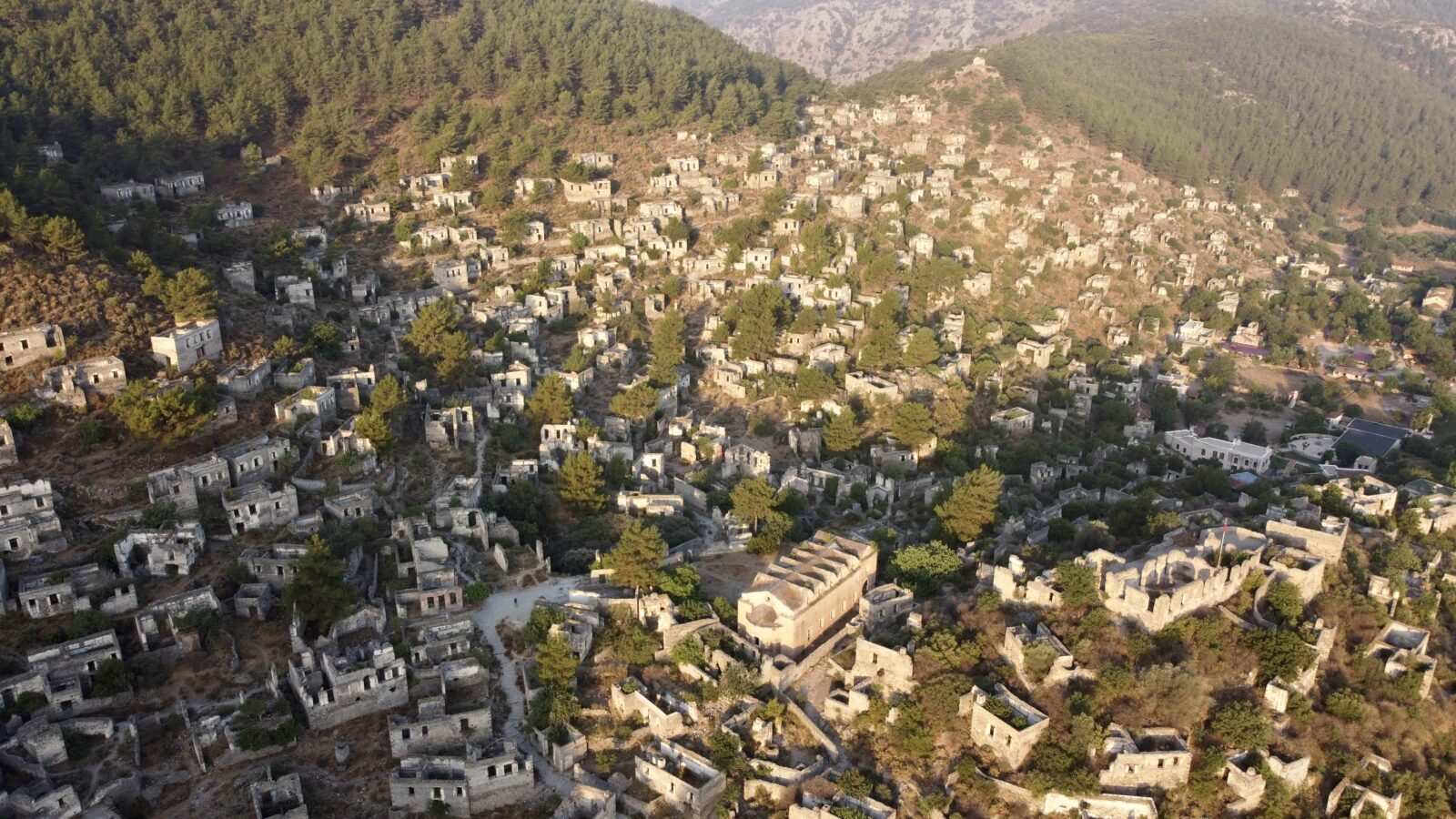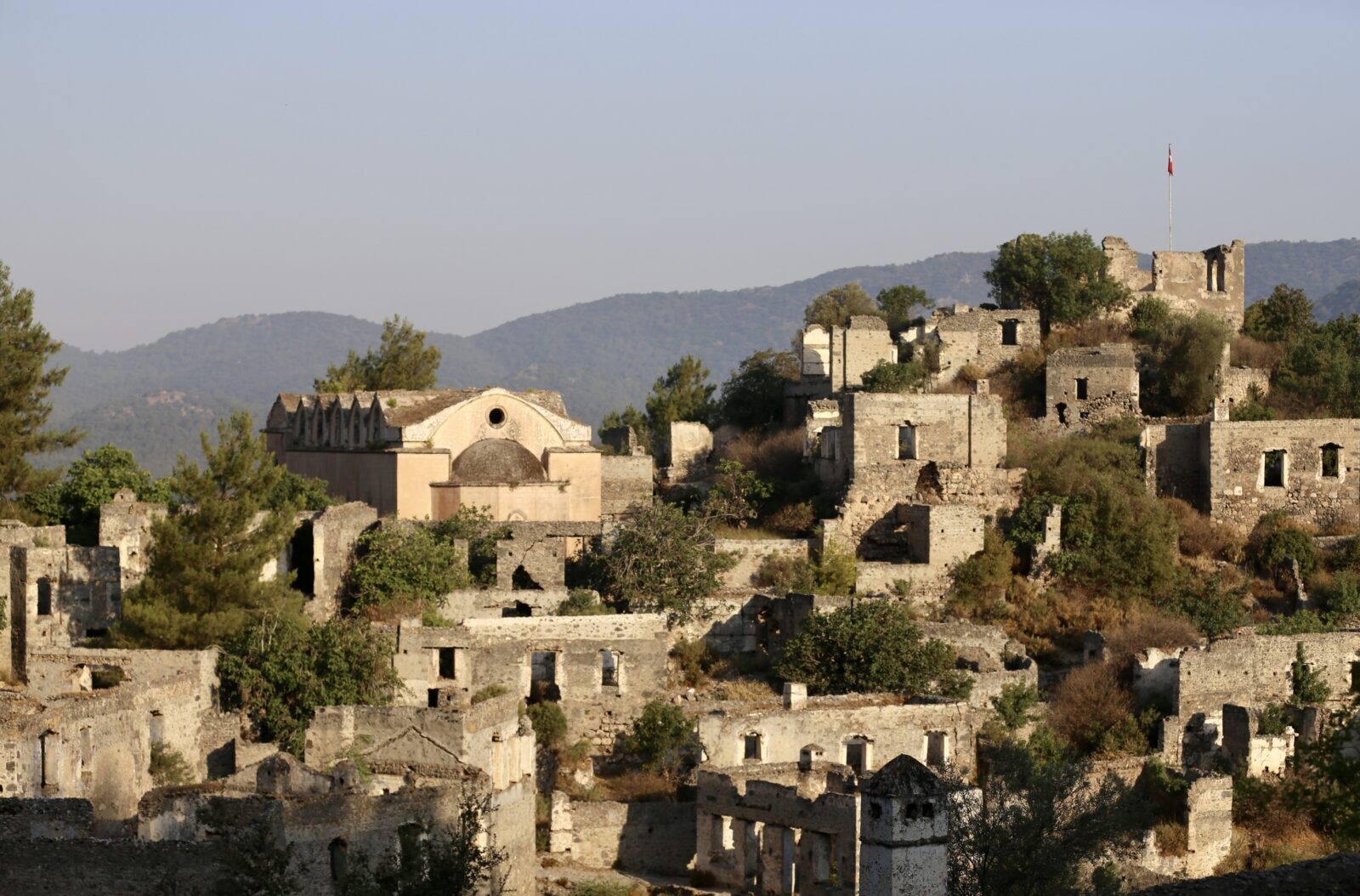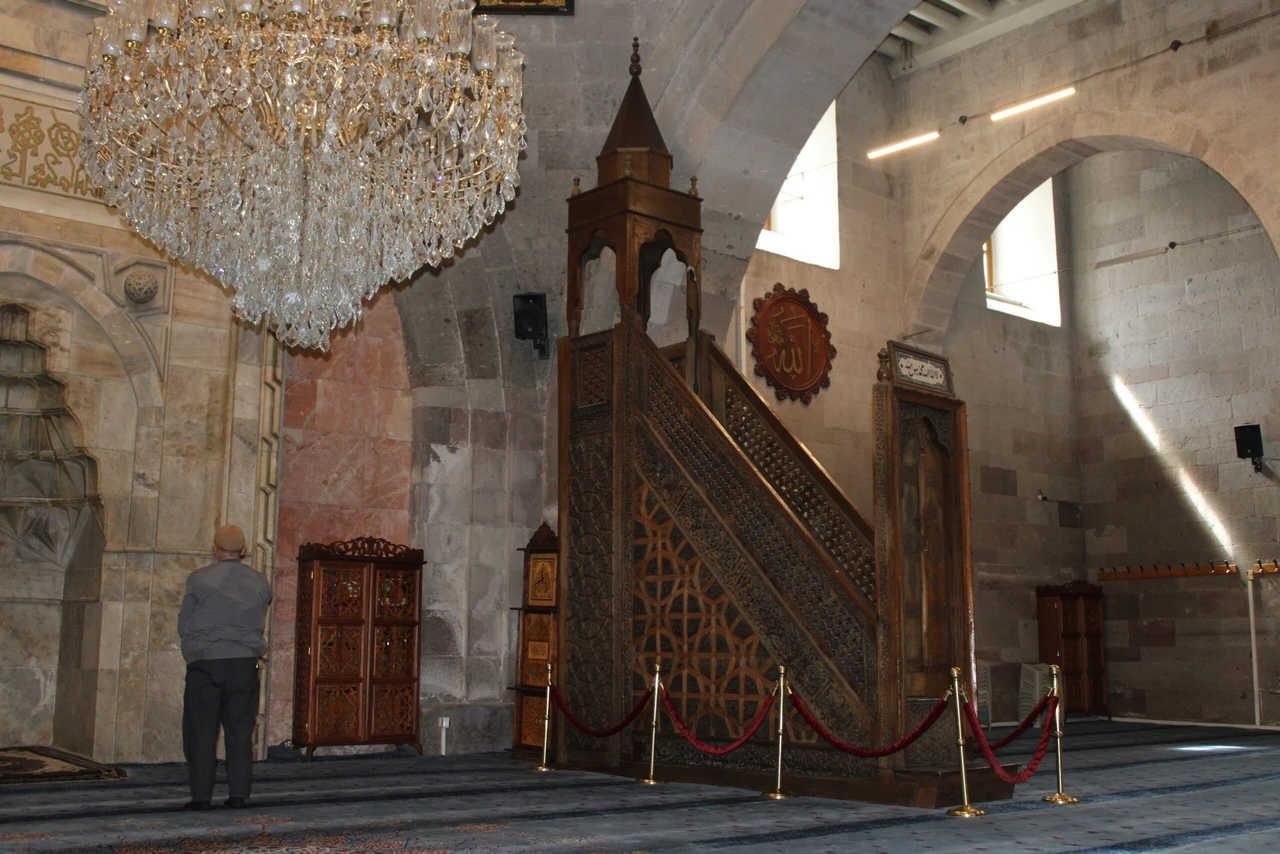Revival of Fethiye’s ghost village Kayakoy attracts thousands of tourists
 Kayakoy, also known as the "ghost village" because it was abandoned years ago in Mugla's Fethiye district, attracts the attention of visitors. in Mugla, Türkiye, June 27, 2024 (Photo by AA Photo)
Kayakoy, also known as the "ghost village" because it was abandoned years ago in Mugla's Fethiye district, attracts the attention of visitors. in Mugla, Türkiye, June 27, 2024 (Photo by AA Photo)
Kayakoy, a historical village in Fethiye, Mugla, Türkiye, has become a major tourist attraction, shedding its past as a deserted ghost village.
This highly protected area, known for its abandoned buildings, attracted 101,868 visitors last year, making it the second most visited archaeological site in Mugla.
Kayakoy boasts approximately 400 houses, two churches, and chapels, drawing tourists and tour groups to the region. The historic structures of the ghost village offer visitors a journey back in time.
Under the supervision of the Ministry of Culture and Tourism, Kayakoy requires tickets for entry, with insights provided by the Fethiye Museum Directorate indicating it hosted 4,000 visitors during the nine-day Eid al-Adha holiday.

Hosting thousands of tourists
Fethiye Mayor Alim Karaca said that they have participated in numerous domestic and international fairs to promote the district.
Highlighting Fethiye’s status as a premier tourist destination this year for both domestic and international visitors, Karaca stated, “We had a bustling holiday period. We hosted thousands of tourists in Fethiye. Alongside sea, sand, and sun, we also welcomed visitors interested in cultural tourism at archaeological sites. Kayakoy, one of the most visited places in previous years, welcomed 4,000 people during the holiday.”
Karaca highlighted ongoing collaborations with the municipality and stakeholders to expand tourism activities year-round in Fethiye.
He also mentioned that Kayakoy had a newspaper before the Republic era, located on the mountainside with buildings strategically placed to maintain unobstructed views of the agricultural lands below.
Over the past five years, they have been advocating for protective zoning plans in partnership with the ministry.
To maintain friendly relations with the Greeks displaced during the population exchange, Karaca has organized friendship and peace festivals in the region.
A must-see destination for everyone
Turgay Kilinc, visiting from Bursa with his family, expressed admiration upon entering the archaeological site, regretting not having visited sooner. He praised the architectural craftsmanship of the houses, situated on the mountain slope, contrasting with the fertile valley used for agricultural purposes.
Kilinc remarked, “The ancients lived in harmony with nature, whereas we attempt to reshape nature to fit our needs. They got it right. Everyone should come and see this. The houses are constructed in a manner that preserves unobstructed views of each other. Architectural mastery.”
Suleyman Coban, who runs a restaurant in Kayakoy, highlighted the significant economic contribution of tourists to local businesses and residents.
He emphasized that the ghost village has been revitalized by visitors, also located along the Lycian Way route, where visitors occasionally stay overnight. Coban stated, “Kayakoy receives heavy footfall in September and during the season. We are eager to host everyone here.”

Fethiye’s 5,000-year history
Built on a hillside, Kayakoy dates back to around 3000 B.C. and was inhabited by Greeks until the population exchange of 1923 following the Turkish War of Independence. The village, affected by the Fethiye earthquake in 1957 which damaged many homes, saw its settled life come to an end.
Designated as a historical site by the Ministry of Culture and Tourism, Kayakoy continues to attract domestic and international visitors.
How to get to Kayakoy, Mugla?
Kayakoy is situated between Fethiye and Oludeniz. It is easily accessible from both locations, approximately 10 kilometers from Fethiye center and 6 kilometers from Oludeniz, with a distance of about 3-4 kilometers from the sea.
By road: To reach Kayakoy by road, first travel to Fethiye. From there, take the road leading to Kayakoy, which involves navigating through several mountainous turns. The road is winding, so caution is advised. Along this route, you can also visit the Amintas Rock Tombs in Fethiye center.
If traveling from Antalya or Oludeniz, you can directly reach Kayakoy via Hisaronu Mahallesi, as Oludeniz is in close proximity to Kayakoy.
By Air: The nearest airport to Kayakoy is Dalaman Airport, which operates daily flights from major cities. From Dalaman Airport, take Muttas or Havas buses to Fethiye bus station. From there, minibuses are available to Kayakoy.

What can visitors expect to see while exploring Kayakoy?
Kayakoy offers a range of activities for visitors:
- Explore ghost village: Wander through the historic streets and imagine life as it was in this abandoned village.
- Discover nearby beaches: Enjoy the turquoise waters and beautiful bays surrounding Kayakoy.
- Relax in local cafes: Experience the local culture by enjoying a drink at one of the village cafes.
- Dine in local restaurants: Sample local cuisine at restaurants offering traditional dishes.
- Visit Oludeniz: Explore the famous Oludeniz Beach and its stunning Blue Lagoon.
How much is entrance fee to Kayakoy?
Kayakoy, also known as Karmylassos Archaeological Site, requires an entrance fee unless you have a museum card, which grants free access.
If you forget your card, you can use the museum card application on your phone for entry. Admission is free for visitors under 18 years old.
Places to visit near Kayakoy
Explore the following nearby attractions:
- Kayakoy
- Gemile Bay
- St. Nicholas Island
- Historic Monastery
- Soguksu Bay
- Oludeniz
- Kumburnu Beach
- Montana Hill
- Butterfly Valley
Kayaoy and its surroundings offer a glimpse into history and natural beauty, making it a must-visit destination for cultural and beach enthusiasts alike.



